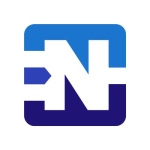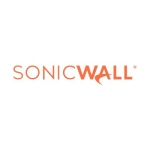What is our primary use case?
It's deployed in multiple ways, depending on the use case. Generally speaking, we have them as edge firewalls, but I have some customers who use them as data center firewalls, and some customers who use them as VPN firewalls. And in some places, they're the east-west firewalls, as they would be called in a core network. We do have some that are for cloud firewalling, that we're using in Azure and AWS. But generally speaking, they're deployed as edge firewalls and on-prem.
How has it helped my organization?
In some cases that I'm aware of, when moving from specific platforms like Check Point, Firepower has offered a much easier way of working with the platform and deploying changes. For the customer, it's a lot easier in the newer platform than it was in the previous one.
I've done network assessments, where we wanted to get visibility into all flows. I used Firepower boxes for some of those, where we tapped a line and let Firepower see all the traffic. It was incredibly helpful in picking up all of the flows of data. As a result, I was able to give information to the customer, saying, "This is what it's doing and this is what it's seeing in your network." I find it very helpful to get all that type of data. It's got a lot more information than NetFlow-type systems.
There have also been use cases where I'm doing east-west and north-south in the same firewall box. That is possible with SGTs and SD-Access and Firepower. That ability has been critical in some of the designs we've done. A scenario would be that we have an underlay, a corporate network, and a guest network VRF-routed zone; big macro security zones. We are doing micro-segmentation at the edge with SD-Access, but the macro-segmentation between the zones is handled by the firewall. Because we didn't want to split up our east-west and north-south, because there really wasn't a budget for it, they're on the same box. That box is able to do both flows that go towards the internet and flows that go between the different interfaces on the firewall. We're using SGTs in those policies and we're able to extend the logic from the SD-Access environment into the firewall environment, which creates a very unified approach to security.
We're also able to implement dynamic policies for dynamic environments with 7.0. That's becoming more and more important every day. IPs are becoming less important; names and locations and where things live in the cloud mean things are becoming a lot more fluid in the world of security. It's very helpful to have objects and groups that can follow that fluidity along, as opposed to me trying to do it old school and static everything up. No one has time for that. Dynamic policy capabilities enable tight integration with Secure Workload at the application workload level. The IP is less relevant and the application or the VMware tag can be tied to a specific ruleset. It's very helpful to be able to have it be so dynamic now. We're using more and more of those dynamic group concepts.
When it comes to the solution’s tags for dynamic policy implementation in cloud environments, VMware is the primary one I'm seeing these days, but I expect Azure to pick up significantly. The use of these tags for dynamic policy implementation in cloud environments simplifies things. We don't have to have so much static stuff pinned up. We can just have a single rule that says, "If it's this tag, then do this," as opposed to, "If it's this IP and this IP and this other IP, then you're allowed to do this thing." By disconnecting it from the IP address, we've made it very flexible.
What is most valuable?
It may sound a bit strange, but one of the most valuable features of Firepower 7.0 is the "live log" type feature called Unified Event Viewer. That view has been really good in helping me get to data faster, decreasing the amount of time it takes to find information, and allowing me to fix problems faster. I've found that to be incredibly valuable because it's a lot easier to get to some points of data now.
Also, the new UI is always getting better from version to version. In the beginning, when it came to managing Cisco Secure Firewall, it wasn't always the easiest, but with 6.7 and 7.0, it's gotten easier and easier. It's a pretty easy system to manage. It's especially beneficial for people who are familiar with ASA logic because a lot of the Firepower logic is the same. For those people, they're just relearning where the buttons are, as opposed to having to figure out how to configure things.
I've used the backup VTI tunnel and that's a feature that lets me create some redundancy for my route-based stuff and it works pretty well. I haven't had any issues with it
Firepower 7.0 also has fantastic Dynamic Access Policies that allow me to replicate a lot of the configurations that were missing and that made it difficult to move off the old ASA platform for some customers. The addition of that capability has removed that limitation and has allowed me to move forward with implementing 7.0.
Snort 3 is one of the biggest points on Firepower 7.0. I've been using Snort 3 for quite a while and, while I don't have a ton of customers on it, I do have some who are running on it and it's worked out pretty well. In their use cases, there wasn't a lot of risk, so that's why we started with it. Snort 3 has some huge advantages when it comes to performance and policy and how it's applying things and processing the flows.
Dynamic Objects have also been really critical. They're very valuable. Version to version, they're adding a lot more features onto Dynamic Objects, and I'm a big fan.
I've also used the Upgrade Wizard quite a bit to upgrade the firmware.
And on the management side, there are the health modules. They added a "metric ton" of them to the FMC [Firepower Management Center]. In version 6.7 they released this new health monitor which makes it a lot easier to see data and get to information faster. It's quite nice looking, as opposed to CLI. The new health modules really do stand out as a great way to get to some of that health data quickly—things like interface information, statistics, drops—that were harder to get to before. I can now see them over time, as opposed to at just a point in time. I've used that a lot and it has been very helpful.
In addition, there is the global search for policy and objects. I use that quite a bit in the search bar. It's a great way to get some information faster. Even if I have to pivot away from the screen I'm on, it's still great to be able to get to it very quickly there.
In a lot of ways, they've addressed some of the biggest complaints, like the "housekeeping" stuff where you have to move around your management system or when it comes to making configuration changes. That has improved from version to version and 7.0 is different. They've added more and have made it easier to get from point A to point B and to consume a lot of that data quickly. That allows me to hop in and do some data validation much faster, without having to search and wait and search and wait. I can get to some of that data quicker to make changes and to fix things. It adds to the overall administrator experience. When operating this technology I'm able to get places faster, rather than it being a type of bottleneck.
There is also the visibility the solution gives you when doing deep packet inspection. It blows up the packet, it matches application types, and it matches web apps. If you're doing SSL decryption it can pinpoint it even further than that. It's able to pull encrypted apps apart and tell me a lot about them. There's a lot of information that 7.0 is bringing to the forefront about flows of data, what it is, and what it's doing. The deep packet inspection and the application visibility portion and Snort are really essential to managing a modern firewall. Firepower does a bang-up job of it, by bringing that data to the forefront.
It's a good box for visibility at the Layer 7 level. If you need Layer 7 visibility, Firepower is going to be able to do that for you. Between VLANs, it does a good job. It's able to look at that Layer 7 data and do some good filtering based on those types of rules.
What needs improvement?
I'd like to see Cisco continue its approach to making it easier to navigate the UI and FMC and make it easier to get from point A to point B. Generally, the room for improvement is going to be all UI-related. The platform, overall, is solid.
I'd also like them to continue to approach things from a policy-oriented perspective. They are moving more and more in that direction.
Also, the change-deployment time can always be improved. Even at 50 seconds, it's longer than some of its competitors. I would challenge Cisco to continue to improve in that area. It's very reasonable at 50 seconds, it's not like it used to be in early versions of Firepower, where it was around seven minutes. Still, it could be quicker. The faster we can deploy changes, the faster we can roll back changes if we have messed something in the configuration. Low deploy times are really good to have.
I would also like to see more features that will help us connect things to the cloud dynamically, and connect things to other sites dynamically. There should be more SD-WAN features in the boxes. If I can use one box to solve cloud connectivity problems, and not have to do stuff so statically, the way I have to do things today on them, that would be helpful.
For how long have I used the solution?
I am a Cisco partner and reseller and I actually beta test for the Firepower team. I work on Firepower boxes and have done so since the beginning. I have customers on Firepower 7.0 and I have been using Firepower 7.0 since its release.
What do I think about the stability of the solution?
I haven't really had any major complaints or issues with Firepower 7.0 stability.
What do I think about the scalability of the solution?
It scales, but it depends on the growth rate of the customer and the amount of bandwidth. It's usually a speed and feed problem: Is the firewall box big enough to handle the traffic? Snort 3 has made some improvements there and it's even given some life back to older boxes because of improvements in code and in how Snort processes data. But, overall, the box just has to be big enough for the amount of traffic you're trying to shove through it.
How are customer service and support?
I've been doing this a long time and I don't usually need to call tech support. But when I do need to call TAC, after working with a lot of the other vendors out there, Cisco TAC is still one of the best technical resources in the market. I do like TAC. That's not to say that every TAC engineer is great, but comparatively, they're one of the best support organizations.
How would you rate customer service and support?
How was the initial setup?
The initial setup is straightforward, with the caveat that I've been doing this for a long time, so for me it is simple and makes sense. But it is pretty straightforward. You have overall policies that wrap up into your access policy, which is the base policy. You have DNS policies that will roll right up into it. Likewise, platform policies get attached to devices. Generally speaking, it's a lot of working through the logic of the rules: How do you want to block stuff, and how do you want to permit stuff? A lot of that is normal firewalling. When I say the setup is simple, it's because it involves normal firewalling issues. You have to deal with routing, NAT rules, ACLs, and VPNs. It's a matter of just kind of working through those same things that every firewall has to solve.
The deployment time depends on the customer and how many rules. If we're building out all their rule sets, it could range from 40 hours to hundreds of hours. It also depends on what we're coming from. We're not generally walking into environments that are green, meaning there's no box there today. It's almost always that there's something else there that we're replacing. We have to take what we're coming from, convert it, and then put it on Firepower. Small businesses might have a couple of rules, enterprises might have hundreds of rules.
Our implementation strategy is to go in, document the current state of the environment, and then work on a future state. We then work through all the in-between stuff. When we have the old firewall configuration, we determine what it will look like on the new firewall configuration. Does the firewall configuration need to be cleaned up? Are there things that we can optimize and improve or modify? A lot of it involves copying configuration from the old platform to the new one. We're usually not trying to change a ton in a firewall project because it increases the risk of problems arising. Usually, customers' networks are operating when we get into them. We prefer to do a cleanup project after implementation, but sometimes they coincide.
In our company, one person can usually do a firewall cutover. And maintenance of Firepower 7.0 usually requires one person. Maintenance will usually involve a firmware upgrade.
What was our ROI?
There is a lot of value with SecureX. Other customers struggle to bring all the data back to one place, the way you can with SecureX, across a product portfolio. The value of that capability is incredible. I don't know how to put a monetary value on it, but from an operational perspective, it's very helpful to have it all back in one place because you're not having to hop around to multiple UIs to find the data you're looking for.
What's my experience with pricing, setup cost, and licensing?
With any vendor, prices are often a little bit negotiable. There are things like discounted rates. There's a list price and then, as a partner, we get a discounted rate based on how much product we're purchasing and our relationship with the vendor.
But on the list-price side of things, there are three big licenses on an FTD [Firepower Threat Defense] box. There are the malware license, the threat license, and the URL filtering license. You can license them in one-year, three-year, and five-year increments. Each license will enable different features on the box. The malware license will enable AMP filtering or AMP detection. The threat detection enables use of the IPS solution, which is really Snort's bread and butter. And the URL filtering enables filtering based on URL categories.
Sometimes we use URL filtering and sometimes we don't. It depends on the customer and on whether they have a different URL filtering strategy, like Umbrella. The two big ones that we sell are malware and threat detection, with threat detection probably being the license we sell the most.
SMARTnet, the technical support component, covers the box. When you purchase the hardware, you buy it with SMARTnet. Licenses cover features, SMARTnet covers support.
Which other solutions did I evaluate?
We continue to support, integrate, and sell three out of the major four vendors: Palo Alto, Fortinet, and Cisco. Every vendor has been a great partner with us, so I don't want to showcase one firewall platform over another.
Palo Alto is arguably the most mature out of the group when it comes to the firewall in general, but they've also been developing on the same platform for quite a long time.
FortiGate, on the other hand, is great in a lot of use cases.
Cisco's strength is how it integrates with the security portfolio at Cisco. When you have a lot of other security products or integrations, Firepower really stands out above the rest. Palo Alto and Fortinet, although they can integrate with SDA to some degree, they don't integrate to the same depths as Firepower. You really start to see the benefits of Firepower in your organization when you're looking at the Cisco security stack. That's what I would argue is one of the biggest benefits of Cisco in general, that stack of products.
With Cisco, it's not necessarily about a single piece, it's definitely about how they all can communicate and talk to each other, and how information is shared between the components, so that you can create a unified approach to security. Their SecureX product is an integration point. It brings together a lot of that information from different product lines in one place. That's really Cisco's game. Some of the other security vendors struggle to keep up with the breadth and depth of what Cisco is doing in all those different spaces.
In terms of ease of management, Firepower is an enterprise product. While FDM [Firepower Device Manager] is really easy to use, FMC has a lot more knobs to turn. Comparing FortiGate to FMC, a lot of the capabilities of FortiGate are still at the CLI level only. Palo Alto is 100 percent UI-based, not that you can't configure a Palo Alto from CLI, but I don't think anybody does that.
What other advice do I have?
My advice is that you need to know your flows. If you're upgrading to Firepower, you should know what traffic matters and what traffic doesn't matter. If you really want to be successful, you should know all the flows of traffic, how they function, what they do. That way, when you get the box up and running, you know exactly how it should operate.
You can split Firepower users into two buckets: help desk and admin. Help desk will usually be read-only and admin will be read-write. If there's one engineer at a customer, he might have admin rights. If there's a help desk and one senior firewall guy, he might have admin rights where his help desk has read-only. It varies by the size of the customer. Most midsize organizations have one or two firewall guys. When you get into the big enterprises, the number goes up.
Regarding Firepower's Snort 3 IPS allowing you to maintain performance while running more rules, the "book answer" is yes, it's supposed to. We're not really running Snort 3 a ton on those yet because of some of the risk and because some of those customers haven't upgraded to 7.0 yet. Those that are on Snort 3 are just not running policy sets that are large enough that to notice any major or even minor improvements. I have seen an uptick in performance improvements with Snort 3, even on firewalls that are not 100,000-rule firewalls. We are seeing improvements with Snort 3. It's just that Snort 2 performance hasn't really affected the box overall, it just runs a little hotter.
When I mentioned the risk for Snort 3 for our larger clients, what I meant is that with new things come new risks. Snort 3 is one of those new things and we have to evaluate, when we upgrade a customer to it, whether the risk of the upgrade warrants doing it for the customer. In some cases, the answer is no, because of burn-in time. With some of our riskier locations or locations that require 24/7, it makes more sense to run Snort 2, which has been out there since forever on the Firepower platform. It's a lot more stable on Snort 2 and the problems are known problems, from a design perspective. We've mitigated those and worked around them. With Snort 3, there could be new bugs or problems, and in some environments, we want to mitigate that risk.
My expectation is that by 7.1 or 7.2 we will upgrade more generally to Snort 3. It's not that it's far away. It's just that with 7.0 being the first release of Snort 3, and 7.0 only having one or two patches under its belt, we thought it better to remove some risk and just use Snort 2.
Cisco Secure Firewall helps to reduce firewall operational costs, depending on the firewall vendor it's replacing. In some cases, customers are coming from old platforms where the security wasn't nearly at the same level as a next-gen firewall, so the advantage of moving to a next-gen firewall is the increase in security. But that comes with an operational burden no matter the firewall type. There is a lot more visibility and capability out of the NGFW platform, but it comes at a cost. There's more data to work through and more things to configure. Still, in most cases, Cisco Secure Firewall is going to decrease operational usage with the caveat that it has to be an "apples-to-apples" situation, which is very hard to come across these days.
Disclosure: PeerSpot contacted the reviewer to collect the review and to validate authenticity. The reviewer was referred by the vendor, but the review is not subject to editing or approval by the vendor. The reviewer's company has a business relationship with this vendor other than being a customer: Reseller















